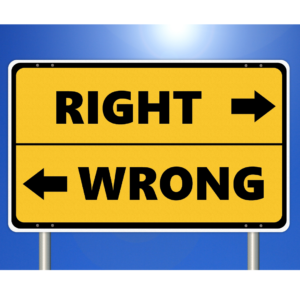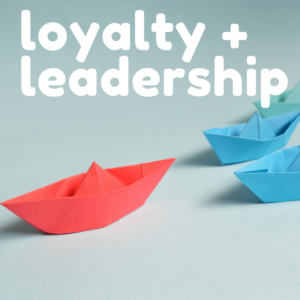Mary E. Marshall's Blog, page 12
March 4, 2020
Leadership and Succession: The Good, the Bad and the Ugly
 In the 30+ years or so that I’ve been working with small to mid-sized businesses, I’ve seen just about every type of “end.” Some good, some not so good.
In the 30+ years or so that I’ve been working with small to mid-sized businesses, I’ve seen just about every type of “end.” Some good, some not so good.
Let’s start with “the ugly.” One entrepreneur grew his business to about $15M and wanted to leave it to his employees. He worked with his executive team for three years on an ESOP strategy and finally pulled the plug. He retained the majority of shares in the first year with the full earn-out over a five year period. However, after year one a very strategic buyer showed up and made an offer that was a win for everyone. Due to the way the ESOP was structured, the employees were able to turn the deal down, even though they did not have the majority of shares. Needless to say, this caused some serious animosity between the parties and the undoing of the ESOP. Trust was broken and no one ended up happy with a broken company and no buyers in sight. The lesson here? Make sure everyone’s expectations are matched and the documents reflect those expectations.
Next comes “the bad.” This was a software company that had multiple suitors, all very strategic buyers. However, the founder/owner couldn’t figure out what his role should be after the sale. Because he wasn’t sure, he kept dragging his feet and eventually, both buyers lost patience and went away. The founder couldn’t understand he alone was the reason the deal didn’t come together. He assumed that there would be many more buyers after those, and there were not. The original buyers picked off his engineers and developed a competing technology. The opportunity completely missed, never to make an appearance again. Lesson? Know what you will do after you sell – you’ll look at potential deals differently.
Lastly, let’s talk about “the good.” This is the way we all want it to go. The founder had a clear plan. Grow the business to $25M, position it to be acquired by one of three strategic partners, stay on for a year, then call it a day and retire to race his sailboats, and travel with his wife. At the ten year mark, he had the revenue track he wanted and had made inroads with all three potential buyers. He decided to pull the trigger and engaged a good investment banker to prepare the business and then work with the buyers. He ended up getting twice the multiple he had anticipated and the contract post-sale he wanted. He was clear what he was negotiable on and what he wasn’t. He was able to negotiate good contracts for his key players and ensure that the rest of his employees were well taken care of. His “baby” was in good hands and today is still going strong. The lesson? Starting with the end in mind works.
The post Leadership and Succession: The Good, the Bad and the Ugly appeared first on Mary Marshall // CEO Coach.
February 26, 2020
Beware Burnout
 There has been a lot written about “burnout” recently. Having been an executive and having coached executives for the last 20 years, I can personally attest to its potential to disrupt one’s life. It’s not the occasional dissatisfaction with one’s work situation, frustration with a boss, board, or direct reports. It’s the state of complete exhaustion, hopelessness, and disillusionment with one’s choices that lead to this state. It’s the inability to go on “as is.”
There has been a lot written about “burnout” recently. Having been an executive and having coached executives for the last 20 years, I can personally attest to its potential to disrupt one’s life. It’s not the occasional dissatisfaction with one’s work situation, frustration with a boss, board, or direct reports. It’s the state of complete exhaustion, hopelessness, and disillusionment with one’s choices that lead to this state. It’s the inability to go on “as is.”
As they say, it happens “slowly, then suddenly” and you start asking yourself how did you get here? You are smart, successful and talented so what’s up? It starts with prioritizing work over a personal life -because it’s what you need to do to get ahead, right? It’s taking on one too many projects, thinking you are master of your universe, refusing to delegate because only you can do it well and you don’t want to let others down. Or you think personal life comes “after,” there will always be more time – until you realize your kids are 10 and somehow you wonder how this happened – where were you? For entrepreneurs, it’s that drive to achieve the vision and in fact, mostly you have no one to delegate to so you are the chief cook and bottle washer, convinced that right around the next task, sale or process, is the big payday and then you can take a break. Spoiler alert, it never happens.
This article does a great job of defining the conundrum and offering some solutions – or at least some helpful tools to avoid the train wreck.
The author recommends the following 3 tactics to practice:
Reconnect with Others – remind yourself that you are more than what you do at work, that you have value as a human to others – rituals, such as group activities or regular get-togethers reinforces this and reminds you that you are part of something bigger – you are not just what you “do.”
Reframe your Goals – Stop putting all the focus on the BHAG or Giant Vision, focus on the incremental progress that you are making towards it and celebrate those milestones. Wins tend to beget more wins but if you don’t celebrate along the way, everyone loses perspective and faith that it’s actually achievable.
Remember to be Useful – Do something besides work that makes you feel like you’re contributing to the greater good. Do something that makes a difference even a small one. We all have something to contribute, we just don’t’ think we have time – and you always do. It’s a good reminder that there is more out there than our work, connect to your world outside of it.
The most successful individuals do all of these three and also know their boundaries and enforce them. Remember that nobody stands up for you better than you. Find your voice and see how much better you will feel – and you might inspire a few others along the way.
The post Beware Burnout appeared first on Mary Marshall // CEO Coach.
February 19, 2020
Is it a Marketing Problem or a Sales Problem?
 Marketing means so many things to so many different people that it’s hard to pin it down. In many ways, it’s a misunderstood discipline, so when one of my clients kept saying, “we need more marketing,” I finally sat him down and asked, “what does that mean to you?” His answer was more sales.
Marketing means so many things to so many different people that it’s hard to pin it down. In many ways, it’s a misunderstood discipline, so when one of my clients kept saying, “we need more marketing,” I finally sat him down and asked, “what does that mean to you?” His answer was more sales.
This is the common misconception regarding the distinction between the two. Marketing is research, design, solving a need, and telling the story. Sales is closing the deal. So I asked him, “which is the problem?” He said that in fact it was marketing because he needed leads and needed to know how to position the company more effectively. He was intent on hiring “a person” to do the marketing, which in his mind meant cold calling. I explained that this was not necessarily marketing and may or may not be what he needed.
I asked if he had previous success with outbound cold calling before and the answer was no. So again, I asked, “what do you need?” Long story short, when we finished the conversation he agreed that indeed he needed marketing, but not the kind he thought. What he needed was someone to come in and manage the brand, create a great story, and offer several ways to start making the phone ring. He already had good salespeople, but they needed leads to augment what they were already doing.
Most smaller companies, (like the one in this story), are not able to afford a talented marketing professional full-time, nor is it what they need. What we ended up doing to solve his problem is to find an outside resource as an interim marketing director for 2 days a week. She came in, assessed the problem and the need, and put together a marketing strategy in a matter of days that was executable and that started working by the end of the first month. She had multiple resources to call upon to get the various tasks done. For a small business, her level of expertise and knowledge was a huge win and he would never have been able to afford her full-time. He now has her one day per week and the sales team has never been happier with all the incoming leads.
The moral of the story is make sure you walk through the need or problem you are solving in depth. Because it can be complex, and hard to see from an insider’s perspective, it can be very helpful to have someone like a coach to work with. The solution is out there, it may just be in a different package then you first envisioned.
The post Is it a Marketing Problem or a Sales Problem? appeared first on Mary Marshall // CEO Coach.
February 12, 2020
Values in Action
 We had a perfect example of values in action last week when a lone Senator stood up for his values. In this day and age of hyper-partisanship, it’s very hard to hear over the din, but Senator Mitt Romney made an impassioned speech to a very small audience that was then heard around the world. He thoughtfully and slowly explained his upcoming vote on one article of impeachment, and that he was voting in accordance with his values. As a deeply religious man, he was guided by what he had been taught, what he believed and what he felt he had to do. Regardless of one’s politics, staying true to one’s values is always the right thing to do.
We had a perfect example of values in action last week when a lone Senator stood up for his values. In this day and age of hyper-partisanship, it’s very hard to hear over the din, but Senator Mitt Romney made an impassioned speech to a very small audience that was then heard around the world. He thoughtfully and slowly explained his upcoming vote on one article of impeachment, and that he was voting in accordance with his values. As a deeply religious man, he was guided by what he had been taught, what he believed and what he felt he had to do. Regardless of one’s politics, staying true to one’s values is always the right thing to do.
I’m sure it was not an easy decision for him, given the likely ramifications both to his reputation and career, but for him, it became easy when to do otherwise would have been a violation of his values. I can respect those decisions all day long.
It takes courage to stand up to the crowd, conventional wisdom or peer pressure. And you know he must have had tremendous pressure to vote the other way. His colleagues did not want him to go against them or the president, but he wouldn’t waver. Regardless of whether you think his vote was right or wrong, he was able to stay true to himself. Knowing that he didn’t violate his values, he can sleep well at night.
Politicians seem to flip flop on a regular basis, so it is hard to know what they really stand for – until, like Senator Romney, they must make a hard decision. It’s encouraging to me that we still have politicians who are willing to stand up for what’s right and what’s true for them, not just want they think will get them elected or avoid a nasty tweet.
Leaders in business also need to stay true to their values. Turnover at companies who are not living their stated values are more than double those that do. Why would anyone want to work for a company that does not do what they say they will do? With employment at an all-time high, using one’s values to create a great culture is the one way to make a positive difference and show why people should want to stay at your company or with you as a leader. And it’s free! No one wants to follow a phony, disingenuous leader. Don’t be that person. Follow Senator Mitt Romney’s example – taking the hard road when it comes to your values – it always turns out to be the easy road in the end.
The post Values in Action appeared first on Mary Marshall // CEO Coach.
February 5, 2020
Entrepreneurship – The Fear and Excitement
 Recently, I saw a parent teaching a child how to ride a bike. It made me smile to see both the excitement and fear on the little boy’s face as he said “now don’t let go ‘til I tell you,” and then the joy when he realized he was riding all by himself.
Recently, I saw a parent teaching a child how to ride a bike. It made me smile to see both the excitement and fear on the little boy’s face as he said “now don’t let go ‘til I tell you,” and then the joy when he realized he was riding all by himself.
Entrepreneurs face that fear and excitement constantly in the early days of a business. And much like a child who will only learn how to ride a bike, by riding a bike, running a business is the same. The issue is we get jaded and become more cautious and won’t take the risks we did as kids. Kids have that wonderful mindset that isn’t cluttered up with “what is,” like most of us adults. They live in wonder about “what could be.” They see a bike, see others riding bikes, and figure how hard can it really be? It’s muscle memory once you get the hang of it, but it’s a leap of faith on that first ride because you’ve never experienced it before.
If more entrepreneurs looked at their business challenges and opportunities as new adventures, (a new bike ride), instead of something scary or dangerous, or less comfortable than where they are now, more innovation would happen. More risks would be taken, more would be won than lost, and more confidence would be built into the business – more muscle memory, if you will.
The minute we start playing it safe, we backslide. The business exists, growth is at single digits, and we’re okay with the status quo because we “know” what could happen if we risk anything. The real risk is to not risk trying. We need to “think like a kid” who hops on that bike not knowing. Sure he might get a banged-up knee or two, but it’s unlikely that he’ll die. Same goes for a business – what if we didn’t “know” what would happen, what might happen instead?
If Jeff Bezos had not started selling books online and amassing one of the most valuable databases and distributions systems in the world, what would online retailing look like now? If he had listened to everyone around him, he would never have gotten on the bike, but he did and look at the results.
Look around your business and see what you need to do or try because what you “know” is probably incorrect. It might have been true at one point, but it’s now become a ball and chain against innovation. Just pick one thing that you’ve been afraid to try or to implement and pretend you’re learning to ride that bike again – just have someone hold the seat until you’re ready to ride! You’ll be glad you did.
photo credit: donnierayjones Reese Zoomin’ on Her Bike via photopin (license)
The post Entrepreneurship – The Fear and Excitement appeared first on Mary Marshall // CEO Coach.
January 29, 2020
Leadership Characteristics That Never Go out of Style
 There was an interesting article in Inc. recently that highlighted what leadership skills were important in our next generation of astronauts. These leadership skills are typically referred to as “soft skills,” but are critical to success in business as well as in space.
There was an interesting article in Inc. recently that highlighted what leadership skills were important in our next generation of astronauts. These leadership skills are typically referred to as “soft skills,” but are critical to success in business as well as in space.
A note about “soft skills” – which are explained as different from the qualifications and training that are required for the positions. I dislike the term because the underlying implication is that they are somehow not as important or that they are squishy and indefinable, or worse, they are emotional and therefore there is an inherent weakness within them. It’s time we did away with this interpretation and realized that what we are talking about are interpersonal skills and emotional intelligence. In many ways, these skills are harder to find in leaders and can be harder to acquire. It’s important that we don’t diminish them.
The three characteristics in the article that are spot-on as leadership criteria we should all look for are:
Ability to put aside one’s differences for the sake of the mission
This is the ability of a leader to cross over to those not “like” them to focus on the mission or purpose and achieve the goal. It means working across cultures, genders, ideologies and more to build a bridge towards the goal. It means working from areas of strength, not focusing on weaknesses. It means assigning tasks based on these strengths and eliminating ego from the entire equation. Diversity has always been available to us to use as a strength, but it has only been recently that organizations have realized how important this is to the successful accomplishments of goals and missions. One person does not make a successful team or achieve the teams’ goals. Only a team recognizing everyone’s abilities and contributions can achieve both.
They are excellent communicators
In order to achieve #1, you must be an excellent communicator. This is the ability to be self-aware enough to engage with different audiences and get your message across. However, it’s important to remember that great communicators are first and foremost great listeners. By actively listening, these leaders will be able to know how to communicate with those constituencies. These leaders also know that communication is comprised of not just words but body language and tone as well. They understand that every communication as a leader has is part of one’s reputation. Those successful communicators will be remembered for how they communicate as well as what they communicate. Others will be forgotten.
They know when it’s time to lead and when it’s time to follow
Great leaders know this – just because you’re a leader, doesn’t mean you always lead. Those who always lead will eventually have no followers. Leadership is a push-pull proposition and good leaders know when to do which one. The obvious benefit of this is that new leaders are always in training. As a leader, you are always giving leadership opportunities to those who follow. If you are not allowing others to lead, they will find somewhere else to get those chances.
If these leadership traits are good enough for our future astronauts, they are good enough for all of us. Take a self-assessment and see how much or how little you are using all three of these and consider making some adjustments as you start the year.
The post Leadership Characteristics That Never Go out of Style appeared first on Mary Marshall // CEO Coach.
January 22, 2020
Loyalty and Leadership
 I recently reread a great piece about loyalty by David Brooks of the New York Times comparing two philosophers, William James, and Josiah Royce. You may not have heard of Josiah Royce? He believed that to have a functioning society, we need unity, not division, and above all, we need loyalty to one another.
I recently reread a great piece about loyalty by David Brooks of the New York Times comparing two philosophers, William James, and Josiah Royce. You may not have heard of Josiah Royce? He believed that to have a functioning society, we need unity, not division, and above all, we need loyalty to one another.
What good leaders know is that if they want loyalty from their teams, they need to go first. They need to show loyalty – authentically – to those who would follow them. It’s a mutual exchange, not a one-way street. Leaders who demand, but don’t return loyalty, will get it to their face and behind their backs will be all those behaviors that we deplore like backstabbing, duplicitousness, and deceit. Lack of coherence in a leader – “do what I say, not what I do” – creates this type of break-in behavior within a group. These are fractured cultures – unintentional cultures that do not produce results for anyone.
Leaders who show loyalty are explicit in what they expect, showing people how they can be successful, what loyalty looks like, and the behaviors that are associated with it. Leaders who demand loyalty and don’t return it generally show their narcissism – I am the leader, therefore, you must follow – believing that title alone gives them the power. Let me be clear, no one earns the right to loyalty simply by being elevated into a leadership role. Some leaders confuse compliance with loyalty, but they are very, very different. Think about all those federal government workers who were forced to work without pay because their positions were deemed “essential.” In most cases, it wasn’t because of loyalty to the president and his agenda that they showed up every day. They were loyal to their jobs, their teams, and in almost all cases, needed the pay from their job to survive.
Good leaders model loyalty. When an employee or team member makes a mistake, it’s not fatal, it’s a learning opportunity and patience is practiced. Standards are upheld and those who choose not to meet them will eventually be let go because the leader is loyal to the mission, the vision, and the team and will not tolerate those who try to undermine or ignore it. Loyalty looks like talking through differences rather than making people wrong. It means looking for the good in all people, not just those we agree with. Loyalty looks like people knowing they have Trust, Compassion, Stability, and Hope in the workplace (from the Gallup Strengthsfinders Polling).
Loyalty is not blind, trust but verify. Good leaders don’t make people “earn” loyalty. Just like trust, they give it and then check to make sure it is warranted. How loyal do you think your team is to you as the leader? More importantly, how loyal are you to the team?
The post Loyalty and Leadership appeared first on Mary Marshall // CEO Coach.
January 15, 2020
Deals Only Work When Values Align
 Right before the holidays began, Warren Buffet explained one of his deeply held business rules. He only does deals and works with those he likes. Period. This is true values alignment and without it, things usually take a bad turn quickly. As he says, he could engage in lots of lucrative deals but doing so would cause his stomach to turn because of the people he has to shake hands with at the end of the day. One bad act does not define a human being. Several bad acts speak to character.
Right before the holidays began, Warren Buffet explained one of his deeply held business rules. He only does deals and works with those he likes. Period. This is true values alignment and without it, things usually take a bad turn quickly. As he says, he could engage in lots of lucrative deals but doing so would cause his stomach to turn because of the people he has to shake hands with at the end of the day. One bad act does not define a human being. Several bad acts speak to character.
As I have written in my book “The Great Culture Disconnect,” business is much easier when you do business with those whom you share values. This does not mean you need to agree with someone on everything. In fact, some of my favorite clients and friends are those with whom I can have spirited debates on issues and in the end, because of the values we hold true, we part friends. Disagreeing with someone on a deal point, way to achieve a goal, or how to collaborate is not a difference in values, it’s a difference of opinion. A difference in values is what Buffet is talking about – doing business with someone who is dishonest or morally bankrupt would violate his deeply held values.
This is why your values don’t have to match exactly with the company you are working with, but they can’t be at cross purposes or opposite of yours. For example, two people can both believe that homeless people should be given help but may not agree on the methods to do so. Agreement on a value, but varying strategies or tactics for how to achieve it. (If only congress could start thinking this way.)
The conversation today about an employee backlash at some of the big tech firms is precisely because a lot of these employees have realized the company is doing things diametrically opposed to their core values and they are hitting back – either leaving or in some cases, sabotaging the software they created. Although I certainly don’t condone the latter behavior, I do understand it.
I believe the polarization in politics today is largely due to confusion over behaviors and values. No one is a bad person because they believe in a certain politician or share values with that politician. They are just very different from yours and therefore, you would not vote for them or perhaps not associate with them.
Before you take a new job, join a group, do a business deal or vote, ask yourself, do I like this person or these people? Take Buffet’s advice and walk away if the answer is no. You’ll be glad you did.
The post Deals Only Work When Values Align appeared first on Mary Marshall // CEO Coach.
December 18, 2019
Is Your Organization Designed for Success in 2020?
 As you look at ways to take your business to the next level in 2020, one of the keys to consider is how it’s designed. When I work with an organization, I look at a lot of things and over the years I’ve come to believe the fundamental “design” of the organization is the key to its success or failure. This is actually a little different than Organizational Development or “OD” as it’s known. OD is a deliberately planned, organization-wide effort to increase an organization’s effectiveness or efficiency.
As you look at ways to take your business to the next level in 2020, one of the keys to consider is how it’s designed. When I work with an organization, I look at a lot of things and over the years I’ve come to believe the fundamental “design” of the organization is the key to its success or failure. This is actually a little different than Organizational Development or “OD” as it’s known. OD is a deliberately planned, organization-wide effort to increase an organization’s effectiveness or efficiency.
Design is how the organization is set up. Yes, it involves the organizational chart or “org chart,” but it’s how it’s put together that allows a company to thrive or wither. Think of it like StrengthsFinders 2.0, the work by the Gallup organization that posits that everyone has strengths that can be grown into talents. Strengths are the natural areas of ability that people thrive in if practiced or nurtured.
The strengths required for each position in an organization need to be matched to the right individual and the structure around that person needs to be matched to his or her development needs. It goes something like this:
At the foundation, start with the values of the organization.
Then start looking at what the organization requires for its product or service to be sold and delivered profitably.
Next, you create positions with strengths identified that if developed into talents, would make the individual and the company successful.
This is done for each department. It is tested continuously until you have the right “mix” for the batter.
Next create the management structure that supports, nurtures and trains these “strengths” to tease out the talent. You also need to do the same for the management.
In its simplest form, it’s about having the right people on the bus, in the right seats, as author of “Good to Great” Jim Collins would say.
It’s rare that you see an organization with the organizational design right and firing on all cylinders and it takes a while to get there, through lots of trial and error. But when you do, it all comes together like beautiful music being played by a world-class symphony orchestra. I’ve worked with a couple of companies in this position and it’s really thrilling to see the collaboration, lack of ego and the enormous amount of work being accomplished. What one client company had not been able to do in 20+ years, they have achieved in the last three. It’s like a new company. They have the battle scars to prove it, but the future is theirs for the taking – and they are having so much fun!
It’s what entrepreneurial companies are all about – trying new things, teaching, learning, collaborating, competing and at the end of the day, winning. All big companies were small once, and if you get the Organizational Design right, you’ll create a big company and launch people in the process. The design and people are the heart of the matter, the product always comes second. If you get the design right and the right people in the right positions your business will thrive!
The post Is Your Organization Designed for Success in 2020? appeared first on Mary Marshall // CEO Coach.
December 11, 2019
2020 – The Year to Take Back Your Intentional Culture
 A year ago, this week, I published my book, The Great Culture [Dis]Connect. I wrote it because we hear so much about the importance of culture these days and I know it can be overwhelming to know where to start, let alone really calculate “why” it matters in business. I can tell you from years of experience that it matters in business because you want your company’s culture to come from your vision, and your values. When that happens, you can ensure that your workplace is the one you intended it to be. You don’t want a culture that has developed unconsciously generated by a bunch of cultural misfits. As the owner, entrepreneur, and leader, if you know things aren’t the way you would like them to be in your organization why not make 2020 the year you take back your culture? I wrote my book specifically to help you do that.
A year ago, this week, I published my book, The Great Culture [Dis]Connect. I wrote it because we hear so much about the importance of culture these days and I know it can be overwhelming to know where to start, let alone really calculate “why” it matters in business. I can tell you from years of experience that it matters in business because you want your company’s culture to come from your vision, and your values. When that happens, you can ensure that your workplace is the one you intended it to be. You don’t want a culture that has developed unconsciously generated by a bunch of cultural misfits. As the owner, entrepreneur, and leader, if you know things aren’t the way you would like them to be in your organization why not make 2020 the year you take back your culture? I wrote my book specifically to help you do that.
If you’re not the entrepreneur, leader or owner, culture matters because you will never be your best self if you’re not in a place that shares your values and a place that you can authentically believe in. You will never have the career you are looking for and your day-to-day experience will not be a happy and fulfilling one.
Culture truly matters and The Great Culture [Dis]Connect is a how-to guide for creating and fixing culture for both financial and personal satisfaction.
I encourage you to buy the book because you will find the blueprint for creating a great culture in your business. Why not make culture a priority in 2020 and improve the day-to-day experience of working in your organization for everyone – including yourself
The post 2020 – The Year to Take Back Your Intentional Culture appeared first on Mary Marshall // CEO Coach.



